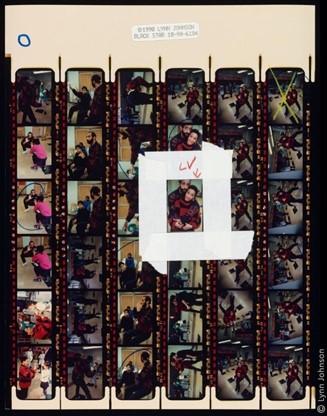
New Digital Collection Shows Breadth of Photographer’s Work

The Lynn Johnson Collection, which is considered one of the cornerstones of the University Libraries’ Documentary Photo Archive, is now available for viewing in a new online digital collection. The Libraries’ Archives & Special Collections and Digital Initiatives efforts have helped make the resource accessible to a global audience and expanded the digital collection to better represent the breadth of Johnson’s work.
The Lynn Johnson Digital Collection will be made available in conjunction with the unveiling of “The Van Gogh Affect,” a traveling exhibit by Lynn Johnson and Pat Lanza at the Kennedy Museum of Art, on Sept. 24. More information about the exhibit can be found on the Kennedy Museum’s website.

“These curated additions will join a collection of nearly 500 images that were digitized by request since the collection was gifted in 2011,” said Erin Wilson, digital imaging specialist and lab manager at University Libraries. “This includes a selection of 400+ images of Fred Rogers of “Mister Rogers Neighborhood” chosen by Johnson herself...”
Lynn Johnson is an award-winning photojournalist who has covered many international issues in her long career. The Lynn Johnson Collection, which was donated by Johnson in 2011, contains material beginning with Johnson’s early work at the Pittsburgh Press through decades of her work as a world-renowned photojournalist, spanning the 1970s into the 2000s. Along with prints, the collection includes film negatives, tear sheets from magazines and other items that add greater context to her work.
“Lynn’s work is just amazing and so impactful,” said photo archivist Laura Smith. “It’s difficult to highlight just one particular image or even one particular assignment because so much of it is relevant. One of the ways I think it really resonates here on campus is when the material is being used in the classroom for instruction.”
The new digital collection allows for more classroom use of the resources without having to handle the materials. It will also make it easier for researchers and the general public to access and view the items in the online collection, which is available for anyone to peruse.
The digital archive will allow scholars who might not be able to travel to visit the materials to engage with the collection, increasing the reach and impact of the images. Being able to zoom in on the high-definition images and view photographic negatives, which are not easily viewed in-person, on a computer are just a few of the advantages of the online collection.

Making the collection available to a global audience aligns with the Libraries’ Strategic Plan goals to connect the University community of faculty, students, global scholars and other stakeholders to the knowledge and expertise contained in the Libraries’ collections.
Smith noted that many people will likely be interested in using the Lynn Johnson Digital Collection.
“Lynn’s work has been just so wide ranging,” she said. “I think that just about any discipline can find material that’s relevant to their field or their studies. Topics in her collection have included health, the environment, women, sports, business, personal stories, science and technology, [etc.].”
For more information about the Lynn Johnson Collection, contact Laura Smith.
All images from the Lynn Johnson Collection/Ohio University Libraries Digital Archival Collection